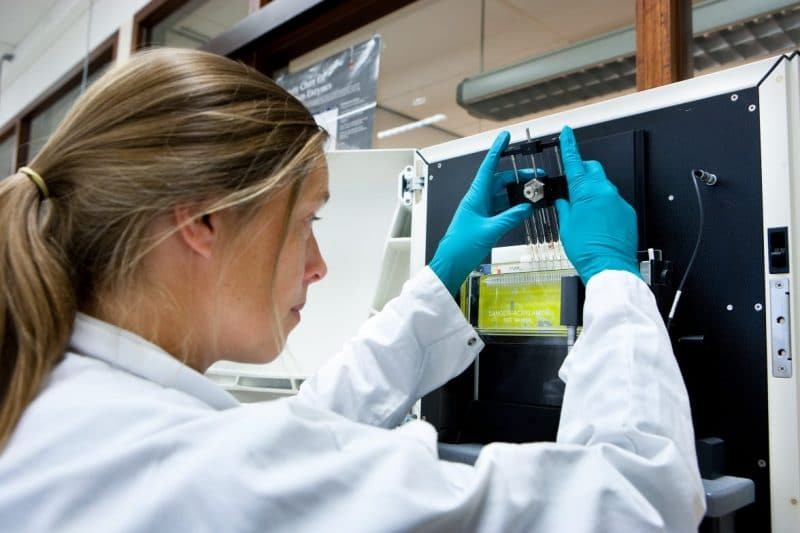A strong IP system is crucial for innovation in plant breeding
Plant breeding is a global and highly innovative activity. Companies invest heavily in the creation of new varieties; the average annual R&D investment mounts to 20-25 per cent of net sales (source: EU Commission Annual Global Survey). To ensure the return on investment and to stimulate new innovation, a strong Plant Breeders’ Right (PBR) system is needed. However, putting in place good regulations and a strong IP rights system for plants cannot rule out piracy in the world of plants. Therefore, it is crucial to have good instruments and procedures to enforce your rights.
[tweetshareinline tweet=”Putting in place good regulations and a strong IP rights system for plants cannot rule out piracy in the world of plants.” username=”EuropeanSeed”]
How to effectively enforce your Plant Breeders’ Rights?
Titleholders are responsible for the maintenance of their IP rights. Often this very specialized task of checking the market for infringing plant material is out-sourced to partners like Anti-Infringements Bureau (AIB) for vegetables, Breeders Trust for field crops or Royalty Administration International (RAI) for vegetatively propagated crops. These partners act like police (C.I.D) officers. They try to prevent and to track down piracy by inspecting growers and licensees regularly. When they detect something suspicious, they try to safeguard the potential evidence. This is a serious challenge and often requires an approval of the judge to collect the suspected plant material.
Several kinds of piracy can be distinguished as acts that violate the PBR of a protected variety: 1) illegal vegetative reproduction of grafted PBR crops. 2) reproduction of seeds of open-pollinated PBR crops; misuse of a popular variety to sell plants or seeds of inferior quality using this name (including mislabelling, fake logo’s and packages). 3) F2 production of PBR hybrids. 4) theft of parental lines and unauthorised sale of F1 hybrids. (Source; annual AIB infringement surveys 2010-17).
[tweetshareinline tweet=”Several kinds of piracy can be distinguished as acts that violate the PBR of a protected variety.” username=”EuropeanSeed”]
Naktuinbouw as the accredited, independent expert
Naktuinbouw, as an independent autonomous public body, developed a forensic tool, called ‘Variety Tracer’ to be applied in cases of suspicion of infringement. As Naktuinbouw is the only organisation in the Netherlands appointed by the government to assess varieties of nearly all crops for distinctness, uniformity and stability (DUS) testing for registration and Plant Breeders’ Rights (via the Board for Plant Varieties), morphological knowledge on many crops and on the PBR system is assured. Since 2004, Naktuinbouw also established a laboratory facility for variety identification using genotyping technologies. It is the combination (and the synergy) of these elements (fields of expertise) that guarantees the power of Variety Tracer.
Variety Tracer – how does it work?
To investigate a potential infringement of PBR a Variety Tracer research project can be initiated. In a Variety Tracer project often, a combination of morphological side-by-side growing trials and genetic research is applied, but just a growing trial or only a genetic analysis is also possible. Since every potential infringement is unique, a custom-made research plan is needed. Together with the titleholder of the PBR, the particular infringement and special crop-specific information is discussed. For example, an outcrossing crop in which a lot of diversity is expected within a variety is treated differently than a vegetatively propagated crop for which all plants belonging to one variety have identical genotypes. This information will have an effect on the number of samples to be analysed. After a final research plan is completed, sampling of all plant material to be included is done. It is of crucial importance that the sampling should be independent. To function as legal proof, a bailiff might be involved to take the suspected samples at the potential infringers growing site. For the genetic analysis two main questions must be considered: 1. How many markers are needed (which DNA technology is best to use)? and, 2. Which reference framework is relevant (which control samples should be included into the test to compare with)? To answer this last question, Naktuinbouw developed some guidelines for the selection of samples in a Variety Tracer analysis. Samples should be representative for the diversity within the species (all relevant morphological characteristics should be present in unbiased way). Some closely related samples should be included. This can be parental lines with seedlings and, when present, known and accepted mutant varieties with the original variety. Choices on which technology to use highly depend on the crop involved and on what information is publically available. For many species sequence information and crop-specific SNP or SSR markers are available. When no DNA information is available a random marker technology like AFLP can be applied.
The interest in variety identity tests increases; the number of Variety Tracer projects grows every year. (85 projects in 2017). The projects vary from simple identity questions to detect mix-ups to complicated infringement cases involving many parties. In nearly all infringement cases that were subject of the specialized PBR court in The Hague, Naktuinbouw was involved as independent expert and the Variety Tracer report served as evidence.
[tweetshareinline tweet=”The interest in plant variety identity tests increases; the number of Variety Tracer projects grows every year.” username=”EuropeanSeed”]
Future perspective – technological developments
With the release of Next Generation Sequencing (NGS) technology (in 2005), a real sequencing revolution has taken place. NGS machines enable massive parallel sequencing, increasing sequencing data output for decreasing costs. NGS is often referred to as High Through-put Sequencing (HTS). To increase the resolution and distinguishable power of DNA markers used in Variety Tracer projects, Naktuinbouw now invests to replace the old technologies like AFLP and SSR by SNP genotyping based on High Through-put Sequencing. So, Variety Tracer 2.0 is currently developed. There are three phases in the process of developing a SNP genotyping method for a particular species: 1. the identification of SNPs and selection of a SNP panel that is representative for the genetic diversity within the species; 2. development of a (sequence based) method to determine the SNP genotype of multiple varieties in a high throughput and cost effective way; 3. storage of all SNP genotypes in databases that can be used for variety identification purposes including infringements. Using these new technologies will enable Naktuinbouw to increase the accuracy and reliability of the genetic research for a lower price. Variety Tracer 2.0 will be better and cheaper to be applied for a plant world without piracy.
Editors’ Note: Hedwich Teunissen is Molecular Biologist at Naktuinbouw













